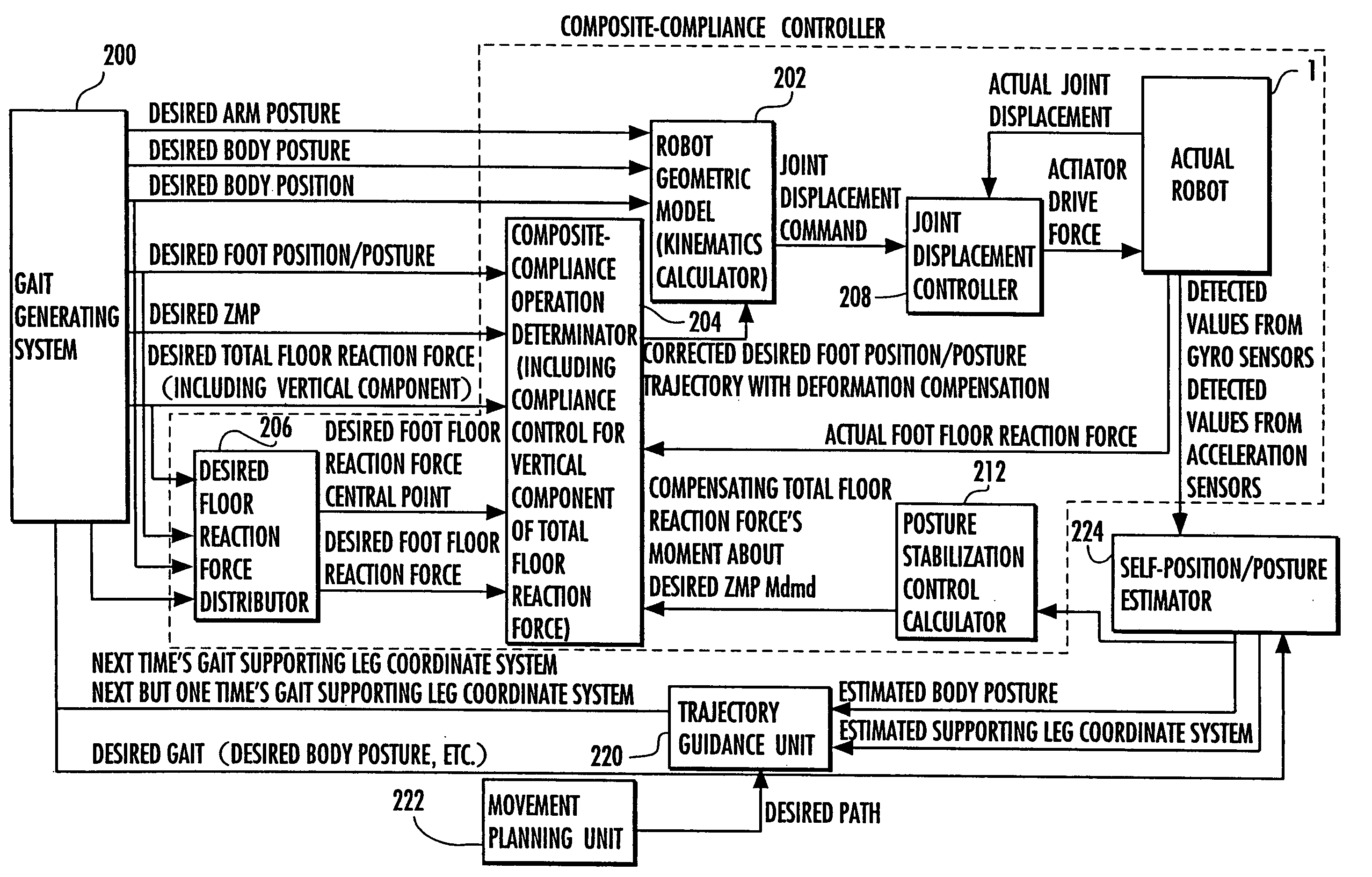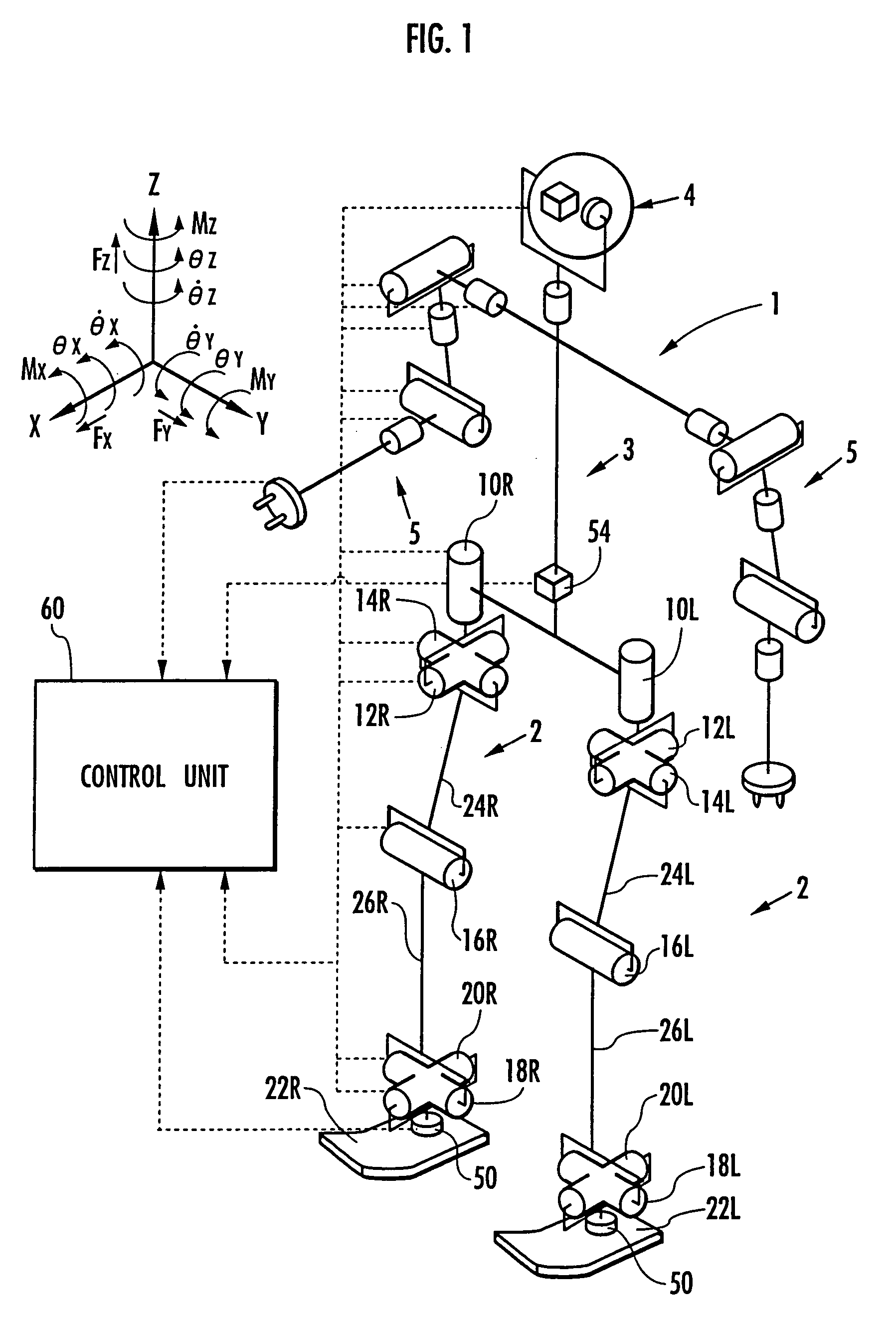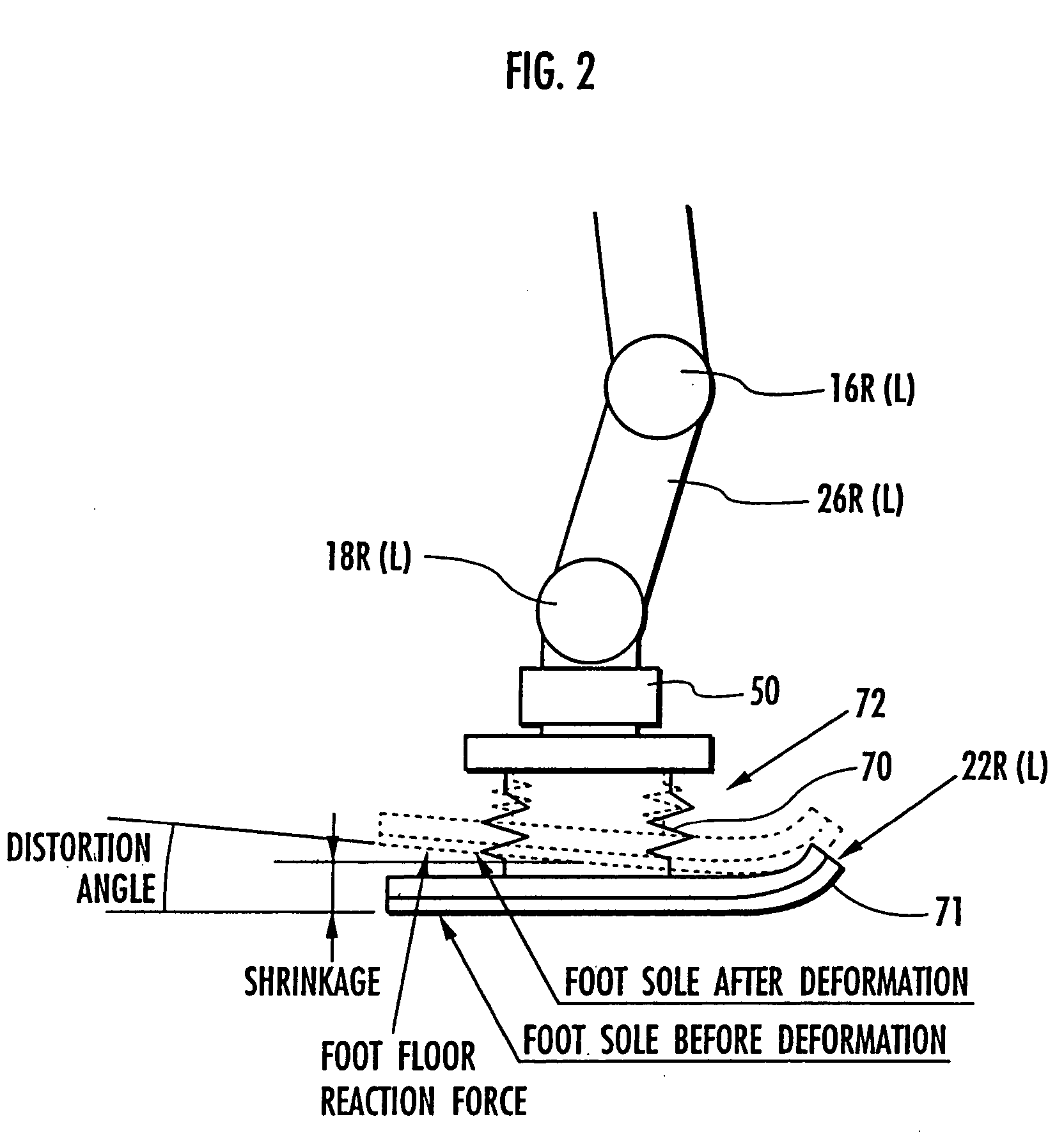Control device and footstep determination device for legged mobile robot
a mobile robot and control device technology, applied in the field of legged mobile robots, can solve the problems of angular slippage between the foot and the floor, robot walking straight, and difficult to apply the control system directly for controlling legged mobile robots, and achieve the effect of convenient setup
- Summary
- Abstract
- Description
- Claims
- Application Information
AI Technical Summary
Benefits of technology
Problems solved by technology
Method used
Image
Examples
third embodiment
[0153] Then, control goes to S016 in which the self-position / posture estimator 224 performs a self-position / posture estimating process. The self-position / posture estimating process is a process of estimating an actual position and orientation of the robot 1 in a coordinate system (global coordinate system) fixed to the floor (ground) on which the robot 1 moves, and is carried out according to a flowchart shown in FIG. 10. The self-position / posture estimating process adopts a process proposed in an application filed on the same date as the present application (a PCT application claiming priority based on Japanese patent application No. 2002-127066, entitled “Apparatus for estimating self-position of legged mobile robot”), and is described in detail in the PCT application. Therefore, the self-position / posture estimating process will be described only briefly.
[0154] The self-position / posture estimating process is a process of estimating a position / posture of the supporting leg coordina...
first embodiment
[0193] The trajectory guidance process in S022 according to the present invention will be described in detail below.
[0194]FIG. 13 shows a flowchart of the trajectory guidance process.
[0195] In S3000, as shown in FIG. 16, a current time's short-term desired point Q(0) is determined based on the position of a representative point P(0) of the current time's estimated supporting leg coordinate system (the estimated supporting leg coordinate system determined in the preceding control period) and a desired path.
[0196] The desired path is a path along which the actual footstep (a row of landed positions and orientations of the foot 22 of the free leg) of the robot 1 represented by a time sequence of the estimated supporting leg coordinate system is to follow. In the description which follows, the desired path may be referred to as a desired footstep path. The desired footstep path may be set up in advance, but may be generated from time to time in order to reach a desired point while avo...
second embodiment
[0233]FIG. 21 is a flowchart of the trajectory guidance process in S022 in FIG. 9 according to the
[0234] The trajectory guidance process in S022 according to the second embodiment will be described below with reference to FIG. 21. In S3200, a curve C which is asymptotically close from the representative point P(0) to the desired footstep path, as shown in FIG. 22, is determined based on the representative point P(0) of the current time's estimated supporting leg coordinate system (estimated supporting leg coordinate system determined in S016 shown in FIG. 9 in the control period at the current time t) and the desired path (desired footstep path). Specifically, a curve C is determined to be a trajectory for an unmanned vehicle or an automatically driven vehicle under trajectory guidance control to be asymptotically close to the desired path.
[0235] More specifically, if a point of intersection between a perpendicular line extending from an optional point A on the curve C to the desir...
PUM
 Login to View More
Login to View More Abstract
Description
Claims
Application Information
 Login to View More
Login to View More - R&D
- Intellectual Property
- Life Sciences
- Materials
- Tech Scout
- Unparalleled Data Quality
- Higher Quality Content
- 60% Fewer Hallucinations
Browse by: Latest US Patents, China's latest patents, Technical Efficacy Thesaurus, Application Domain, Technology Topic, Popular Technical Reports.
© 2025 PatSnap. All rights reserved.Legal|Privacy policy|Modern Slavery Act Transparency Statement|Sitemap|About US| Contact US: help@patsnap.com



